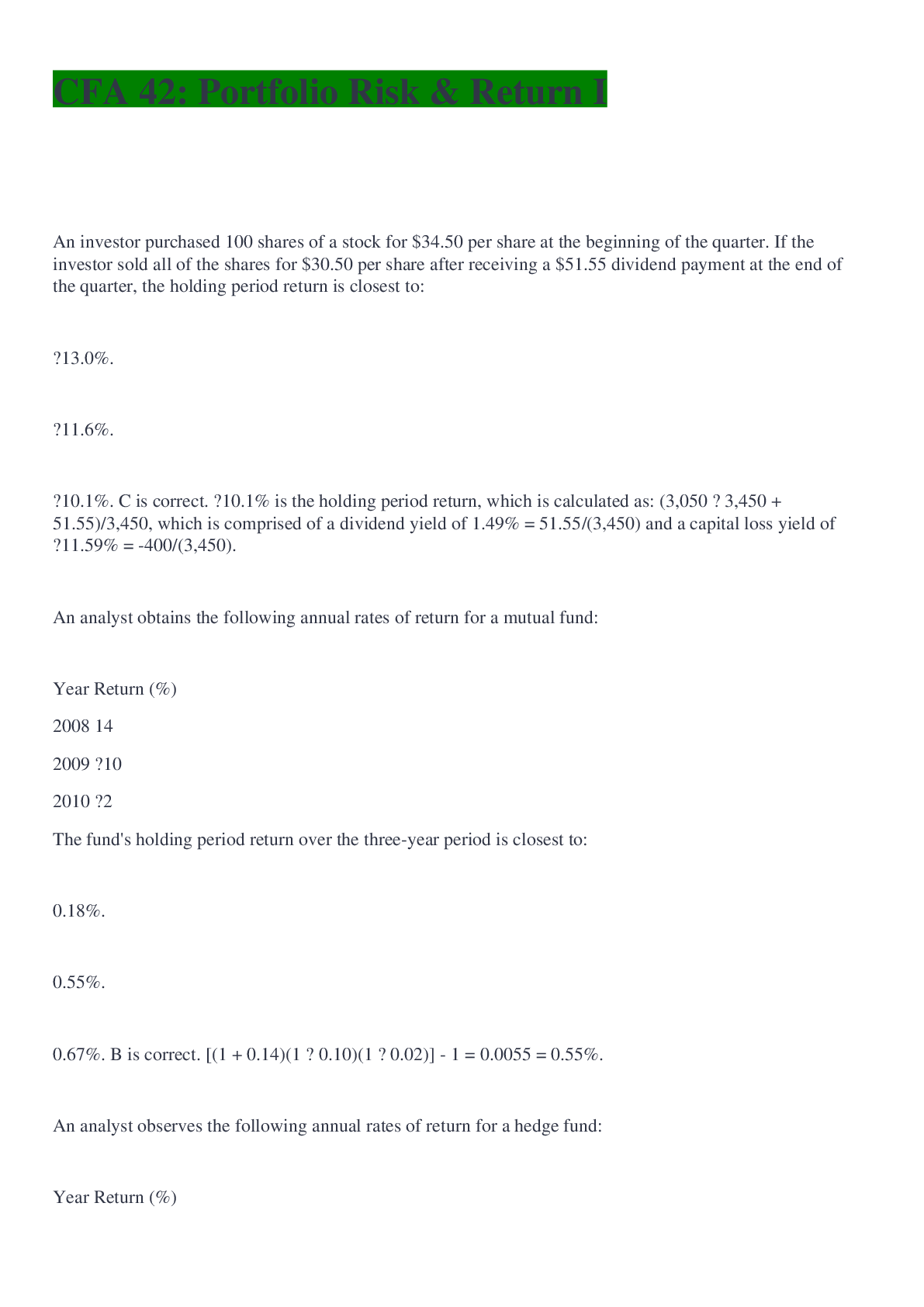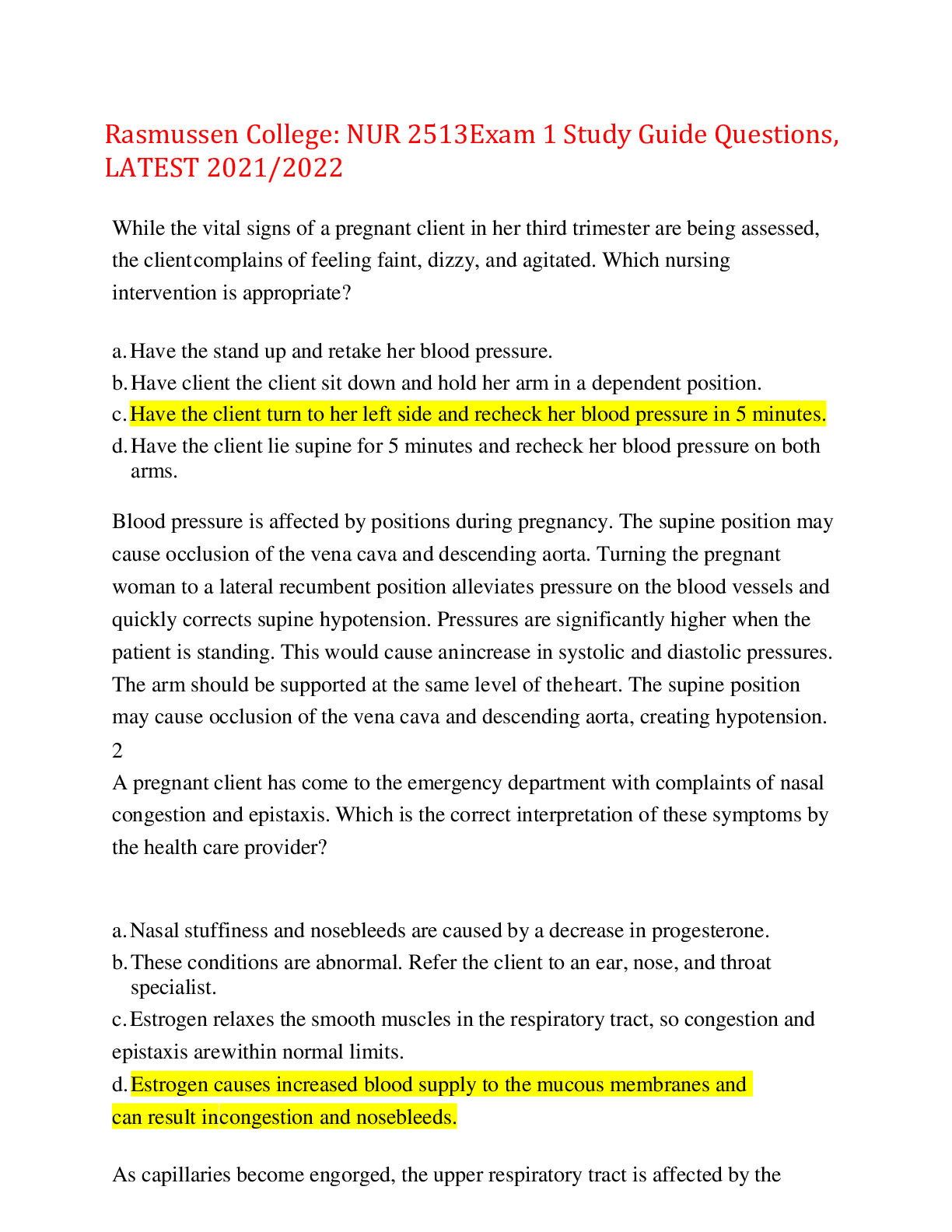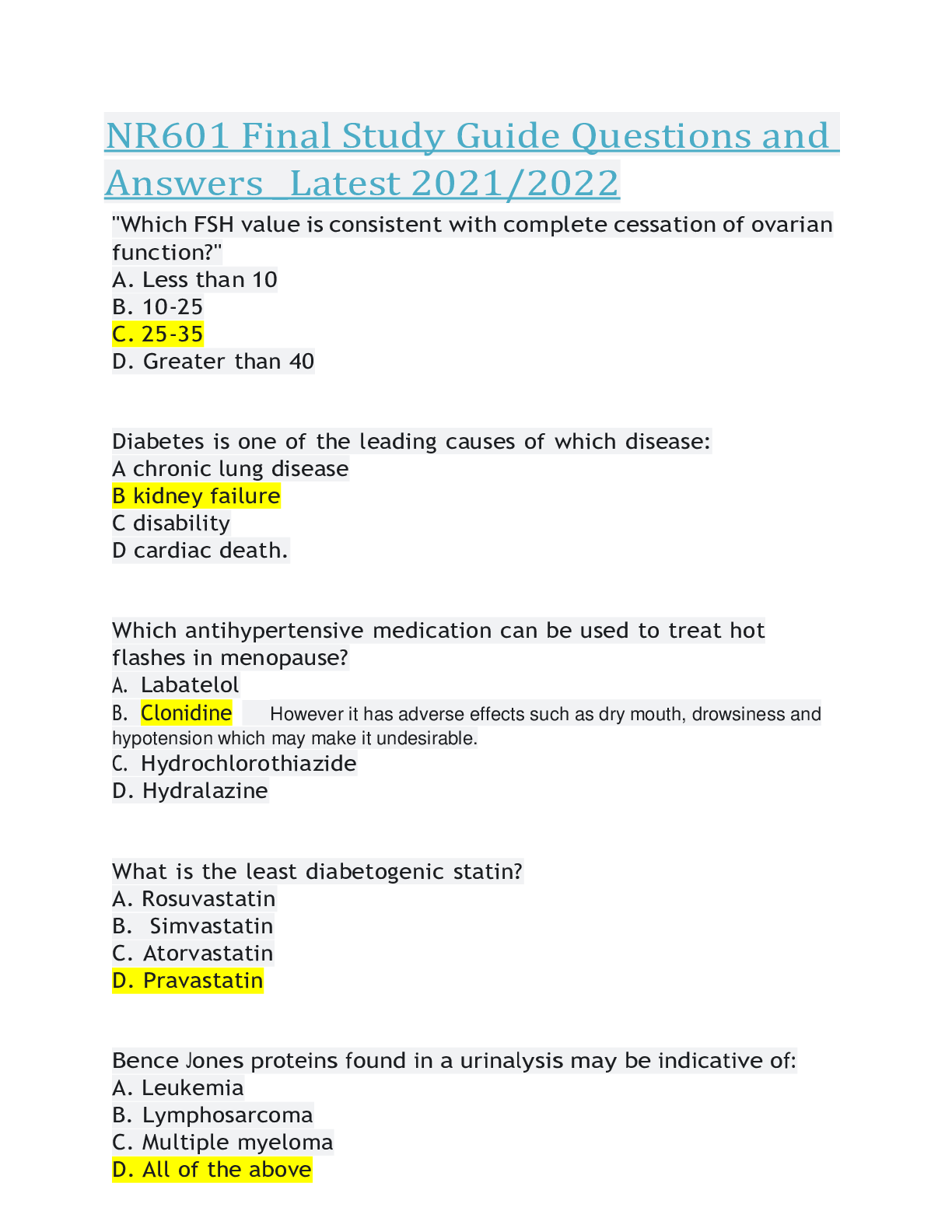Government > QUESTIONS & ANSWERS > SAPPC Study Guide Questions and Answers with Certified Solutions (All)
SAPPC Study Guide Questions and Answers with Certified Solutions
Document Content and Description Below
SAPPC Study Guide Questions and Answers with Certified Solutions Describe the purpose, intent, and security professional's role in each step of the Command Cyber Readiness Inspections (CCRI) proces... s ✔✔Defining the scope, the inspection phase, documentation of observations, and reporting findings. A security professional would have responsibilities in defining the scope of the inspection, overseeing the self-inspection and remediation efforts, and coordinating with the CCRI team throughout the remainder of the process List two factors that should be considered when determining position sensitivity ✔✔(1) Level of access to classified information (2) IT level needed (3) Duties associated with position Explain the process for responding to a "spillage" ✔✔1. Detection (implied) 2. Notification and preliminary inquiry 3. Containment and continuity of operations 4. Formal inquiry 5. Resolution 6. Reporting Explain how the adjudication process contributes to effective risk management of DoD assets ✔✔Determines an individual's loyalty, reliability, and trustworthiness are in the best interest of national security Explain why access control measures are contingent on Force Protection Conditions ✔✔The Force Protection Conditions determine the amount of control measures needed to be taken in response to various levels of threats against military facilities or installations. Define the purpose and function of the militarily critical technologies list (MCTL) ✔✔Serves as a technical reference for the development and implementation of DoD technology, security policies on international transfers of defense-related goods, services, and technologies as administered by the Director, Defense Technology Security Administration (DTSA). Describe how authorization of Limited Access Authority impacts risk to DoD assets ✔✔Increases risk by allowing a foreign national access to classified information. Reduces risk by ensuring Foreign Nationals with a unique or unusual skills set have been properly investigated, adjudicated or vetted before being granted access to specific pieces of classified information only. List three different types of threats to classified information ✔✔(1) Insider threat (2) Foreign Intelligence entities (3) Cybersecurity Threat What is the security professionals' role in pursuing and meeting cyber security goals? ✔✔The role of the cyberspace workforce is to "secure, defend, and preserve data, networks, net-centric capabilities, and other designated systems by ensuring appropriate security controls and measures are in place, and taking internal defense actions" (DoDD 8140.01). Per DoDI 8500.01, Cybersecurity (March 14, 2014), personnel occupying cybersecurity positions must be assigned in writing and trained / qualified in accordance with their role. Identify specific baseline administrative and/or physical security controls applicable to each system categorization ✔✔Controls are identified by enumerating the common controls, identifying those relevant to the categorization level as defined in NIST SP 800-53, potentially tailored by the Authorizing Official, and overlays are applied based on the nature of the system. List three (3) factors for determining whether US companies are under Foreign Ownership Control of Influence (FOCI) ✔✔1. Record of economic and government espionage against the US targets. 2. Record of enforcement/engagement in unauthorized technology transfer. 3. Type and sensitivity of the information that shall be accessed. 4. The source, nature and extent of FOCI. 5. Record of compliance with pertinent US laws, regulations and contracts. 6. Nature and bilateral and multilateral security and information exchange agreements. 7. Ownership or control in whole or part, by a foreign government. How does lack of attention to the concept of compilation of information introduce risks to DoD assets? ✔✔1. Unauthorized disclosure 2. Misclassification 3. Security Violation 4. Improper safeguarding 5. Improper dissemination 6. Improper handling 7. Improper destruction 8. Data Spill List at least three indicators of insider threats ✔✔1. Failure to report overseas travel or contact with foreign nationals. 2. Seeking to gain higher clearance or expand access outside the job scope. 3. Engaging in classified conversations without a need to know. 4. Working hours inconsistent with job assignment or insistence on working in private. 5. Exploitable behavior traits. 6. Repeated security violations. 7. Attempting to enter areas not granted access to. 8. Unexplained affluence/living above one's means. 9. Anomalies (adversary taking actions which indicate they are knowledgeable to information). 10. Illegal downloads of information/files. What is the difference between physical security surveys and physical security inspections? ✔✔A physical security survey is a formal record assessment of an installation's overall security posture; whereas a physical security inspection is a formal record of compliance of physical procedures and measures implemented by a unit or activity to protect its assets Describe the security professional's possible roles in handling a security incident (*hint SSRII*) ✔✔1. Secure 2. Safeguard 3. Report 4. Inquire 5. Investigate List at least three individuals in the personnel security investigation (PSI) process and describe their roles ✔✔Facility Security Officer/Security Manager/Security Officer/Security Coordinator/Security Assistant: initiates, reviews, forwards E-Qip investigation to investigation service provider (ISP) Subject: Completes forms and provides additional information if required Investigator: Conducts PSI Adjudicator: Determines security clearance eligibility What are at least three principle incidents/events required to be reported to DoD counterintelligence (CI) organizations? ✔✔1. Espionage 2. Sabotage 3. Terrorism 4. Cyber 5. Insider Threat List three elements that a security professional should consider when assessing and managing risks to DoD assets ✔✔1. Asset 2. Threat 3. Vulnerability 4. Risk 5. Countermeasures Explain how visitor identification control methods are used to effectively control access to facilities ✔✔Ensure only authorized personnel and materials that enter and exit from an installation or facility are properly identified, verified, and authenticated Briefly define a Special Access Program ✔✔A program established for a specific class of classified information that imposes safeguarding and access requirements that exceed those normally required for information at the same classification level Identify the three core components of the Risk Assessment process ✔✔1. Asset criticality 2. Threat Assessment 3. Vulnerability Assessment List at least three (3) types of security briefings that help manage risks to DoD assets ✔✔1. Initial orientation 2. Annual refresher 3. Threat awareness 4. Foreign Travel 5. Derivative classification 6. Debriefings 7. Termination briefing 8. Counterintelligence briefing Who determines or identifies when physical security surveys and inspections are required? ✔✔1. DoD Component Commanders. 2. Program Managers 3. Security Managers 4. Physical Security Specialists/Officers List three transmission and transportation requirements that help manage risks to DoD assets ✔✔1. Safeguarding 2. Briefings 3. Documentation 4. Personal control 5. Pre-coordination 6. Preparing for transportation (packaging) 7. Utilizing proper methods of transmission/transportation based on classification level 8. Intended recipients have proper clearance/eligibility and need to know (or access) 9. Capability to properly store classified information List three types of safeguarding procedures for classified information ✔✔1. Proper storage 2. Proper handling 3. Approved disposition 4. Proper transmission/transportation methods 5. Receipt use, when required 6. Dissemination 7. Physical security measures 8. Technical, administrative, and personnel control measures (deleted access control as these measures constitute access control) 9. Develop emergency plan Describe the purpose of the Foreign Visitor Program ✔✔To track and approve access by a foreign entity to information that is classified; and to approve access by a foreign entity to information that is unclassified, related to a US Government contract, or contractor/government facility visits covered by International Traffic in Arms Regulations (ITAR) Explain how effective implementation of the continuous evaluation process contributes to management of the risks to DoD assets ✔✔Ensures that individuals with security clearance eligibility and access are continuously assessed through utilization of accessible databases and other lawfully available information; continue to meet adjudicative standards; and that any issues that may arise are promptly reported and addressed Briefly describe the purpose of the DD Form 254 ✔✔Convey security requirements and classification guidance, and provide handling procedures for classified materials received and/or generated under a classified contract List the three categories of Special Access Programs ✔✔1. Acquisition 2. Intelligence 3. Operations and support Identify the five Cognizant Security Agencies (CSAs) and describe their role in the National Industrial Security Program (NISP) ✔✔1. Department of Defense 2. Director of National Intelligence 3. Department of Energy 4. Nuclear Regulatory Commission 5. Department of Homeland Security. Role: implement and oversee an Industrial Security Program to safeguard classified information with cleared industry under the respective CSA's jurisdiction. What are the five steps in the DoD risk management model ✔✔1. Assess Assets 2. Assess Threats 3. Assess Vulnerabilities 4. Assess Risks 5. Determine Countermeasures What are 3 core components of the risk assessment process? ✔✔1. Asset criticality 2. Threat assessment 3. Vulnerability assessment What do SAPs aim to achieve? ✔✔1. Protect technological breakthroughs 2. Cover exploitation of adversary vulnerabilities 3. Protect sensitive operational plans 4. Reduce intelligence on U.S. capabilities What are the SAP Lifecycle ✔✔1. Establishment (is extra protection warranted?) 2. Management and Administration (continued need? processed followed?) 3. Apportionment (proper measures in place? approval received) 4. Disestablishment (program no longer needed?) What is the five-step OPSEC process? ✔✔1. Identify critical information 2. Analyze threats 3. Analyze vulnerabilities 4. Assess risks 5. Apply OPSEC countermeasures What are the 5 steps to RMF? ✔✔1. Identify the critical assets that require protection 2. Identify undesirable events and expected impacts 3. Value and prioritize assets based on the consequence of loss 4. Assess the risks and 5. Determine countermeasures What the 5 categories of assets? ✔✔1. People 2. Information 3. Equipment 4. Facilities and 5. Activities and Operations Define the four levels of asset impact loss ✔✔1. Critical indicates that compromise to the assets targeted would have grave consequences leading to loss of life, serious injury, or mission failure. The rating scale is from 50-100 2. A High value indicates that a compromise to assets would have serious consequences resulting in the loss of classified or highly sensitive data that could impair operations affecting national interests for a limited period of time. The rating scale is from 13-50 3. An asset value of Medium indicates that a compromise to the assets would have moderate consequences resulting in the loss of confidential, sensitive data or costly equipment/property that would impair operations affecting national interests for a limited period of time. The rating scale is from 3-13 4. A Low value indicates that there is little or no impact on human life or the continuation of operations affecting national security or national interests. The rating scale is from 1-3 Define the four threat criteria ✔✔A Critical rating indicates that a definite threat exists against the assets and that the adversary has both the capability and intent to launch an attack, and that the subject or similar assets are targeted on a frequent or recurring basis. The rating scale is set at 75-100%. A High rating indicates that a credible threat against the assets exists, based on our knowledge of the adversary's capability and intent to attack the assets and based on related incidents having taken place at similar facilities. The rating scale is 50-74%. A rating of Medium indicates that there is a potential threat to the assets based on the adversary's desire to compromise the assets and the possibility that the adversary could obtain the capability through a third party who has demonstrated the capability in related incidents. The rating scale is set from 25-49%. A Low rating indicates little or no credible evidence of capability or intent, with no history of actual or planned threats against the assets. The rating scale is set at 0-24%. What is the risk formula? ✔✔RISK = IMPACT x (THREAT x VULNERABILITY) What are the risk countermeasures? ✔✔1. Manpower 2. Equipment 3. Procedures What are the four levels of vulnerability? ✔✔1. A Critical rating indicates that there are no effective countermeasures currently in place and all known adversaries would be capable of exploiting the asset. Critical is assigned a rating scale of 75-100%. 2. Assigning a High rating indicates that although there are some countermeasures in place, there are still multiple weaknesses through which many adversaries would be capable of exploiting the asset. The rating scale is set at 50-74%. 3. A Medium rating indicates that there are effective countermeasures in place, however one weakness does exist which some known adversaries would be capable of exploiting. The rating scale is set at 25-49%. 4. Assigning a Low rating indicates that multiple layers of effective countermeasures exist and few or no known adversaries would be capable of exploiting the asset. The low rating scale is set at 0-24%. 5 categories of vulnerability? ✔✔1. Human 2. Operational 3. Information 4. Facility 5. Equipment What are the 8 categories of Classified Military Information (CMI)? ✔✔Category 1 includes information related to the organization, training, and employment of U.S. military forces. Category 2 includes information on specific items of equipment already in production, or in service, and the information necessary for their operation, maintenance, and training. Items on the U.S. Munitions List, or USML, fall within this category. Category 3 includes information related to fundamental theories, design, and experimental investigation into possible military applications; it includes engineering data, operational requirements, concepts, and military characteristics required to adopt the item for production. Development ceases when the equipment has completed suitability testing and has been adopted for use or production. Category 4 includes information related to designs, specifications, manufacturing techniques, and such related information necessary to manufacture materiel and munitions. Category 5 includes information necessary to plan, ensure readiness for, and provide support to the achievement of mutual force development goals or participation in specific combined tactical operations and exercises. It does not include strategic plans and guidance or North American defense information. Category 6 includes information pertaining to U.S. forces in a specific area. Category 7 includes information related to plans, operations, programs, and projects, to include data and equipment, directly related to North American defense Category 8 includes military-related information that pertains to foreign nations. Define Designated Disclosure Authority (DDA) ✔✔An official at the subordinate component level designated by the Head of a DoD Component or the Component's Principal Disclosure Authority to control disclosures of classified military information by his or her organization Define Delegation of Disclosure Authority Letter (DDL) ✔✔a document issued by the appropriate designated disclosure authority explaining classification levels, categories, scope, and limitations of information under a DoD Component's disclosure jurisdiction that may be disclosed to a foreign government or international organization Define Arms Export Control Act (AECA) ✔✔Governs the export of defense articles and services and related technical data and is the legal basis for most international programs. NDP-1 (National Disclosure Policy) ✔✔Contains the procedures for disclosure of U.S. classified military information to foreign governments and international organizations Define General Security of Military Information Agreement (GSOMIA) ✔✔a government-togovernment agreement negotiated through diplomatic channels. It states that each party to the agreement will afford to classified information provided by the other the degree of security protection afforded it by the releasing government. [Show More]
Last updated: 1 year ago
Preview 1 out of 18 pages
Instant download
.png)
Instant download
Also available in bundle (1)
.png)
SAPPC BUNDLED EXAMS QUESTIONS AND ANSWERS WITH VERIFED SOLUTIONS
SAPPC BUNDLED EXAMS QUESTIONS AND ANSWERS WITH VERIFED SOLUTIONS
By Nutmegs 1 year ago
$20
8
Reviews( 0 )
Document information
Connected school, study & course
About the document
Uploaded On
Feb 22, 2023
Number of pages
18
Written in
Additional information
This document has been written for:
Uploaded
Feb 22, 2023
Downloads
0
Views
57

.png)
.png)
.png)
.png)
.png)
.png)
.png)
.png)
.png)
.png)
.png)

.png)

.png)
.png)
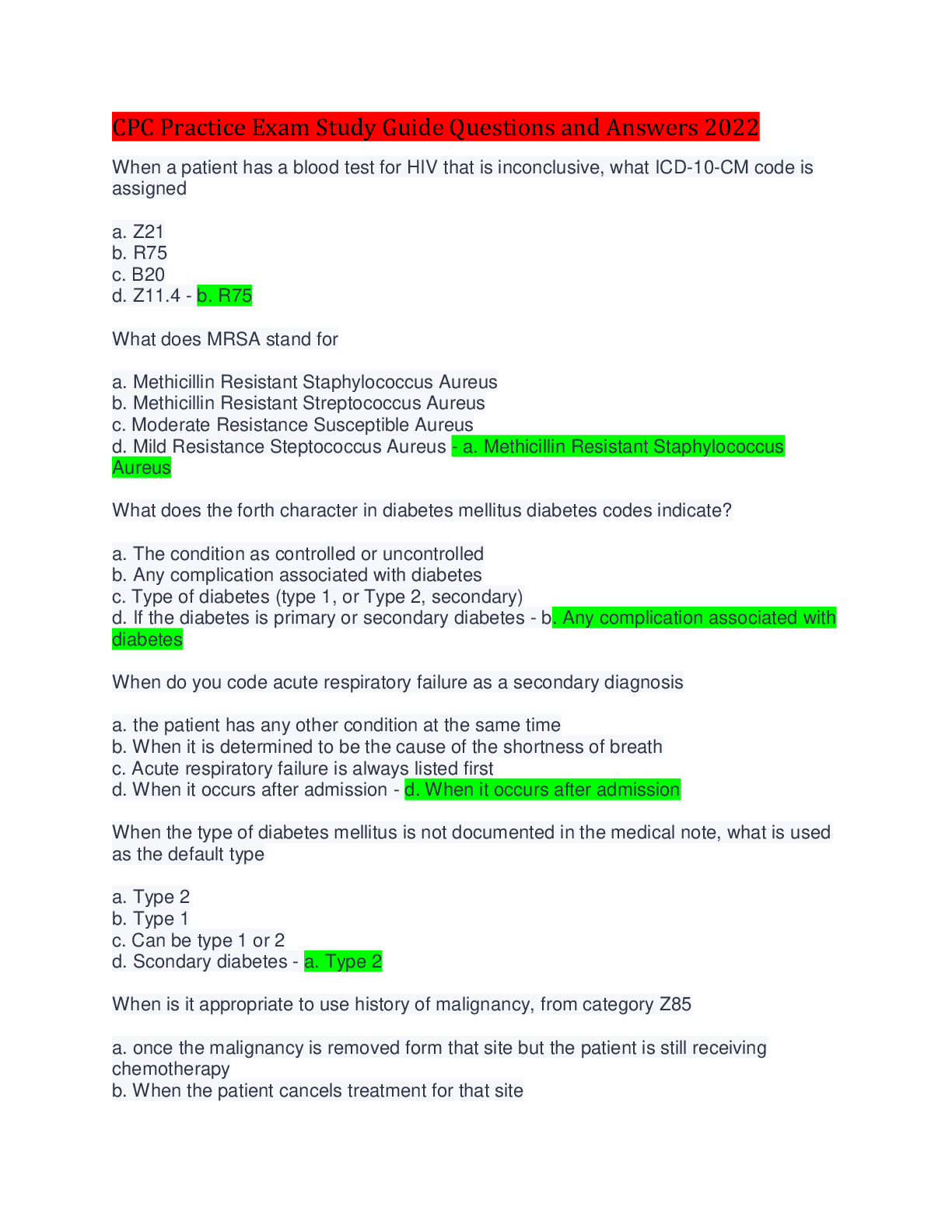
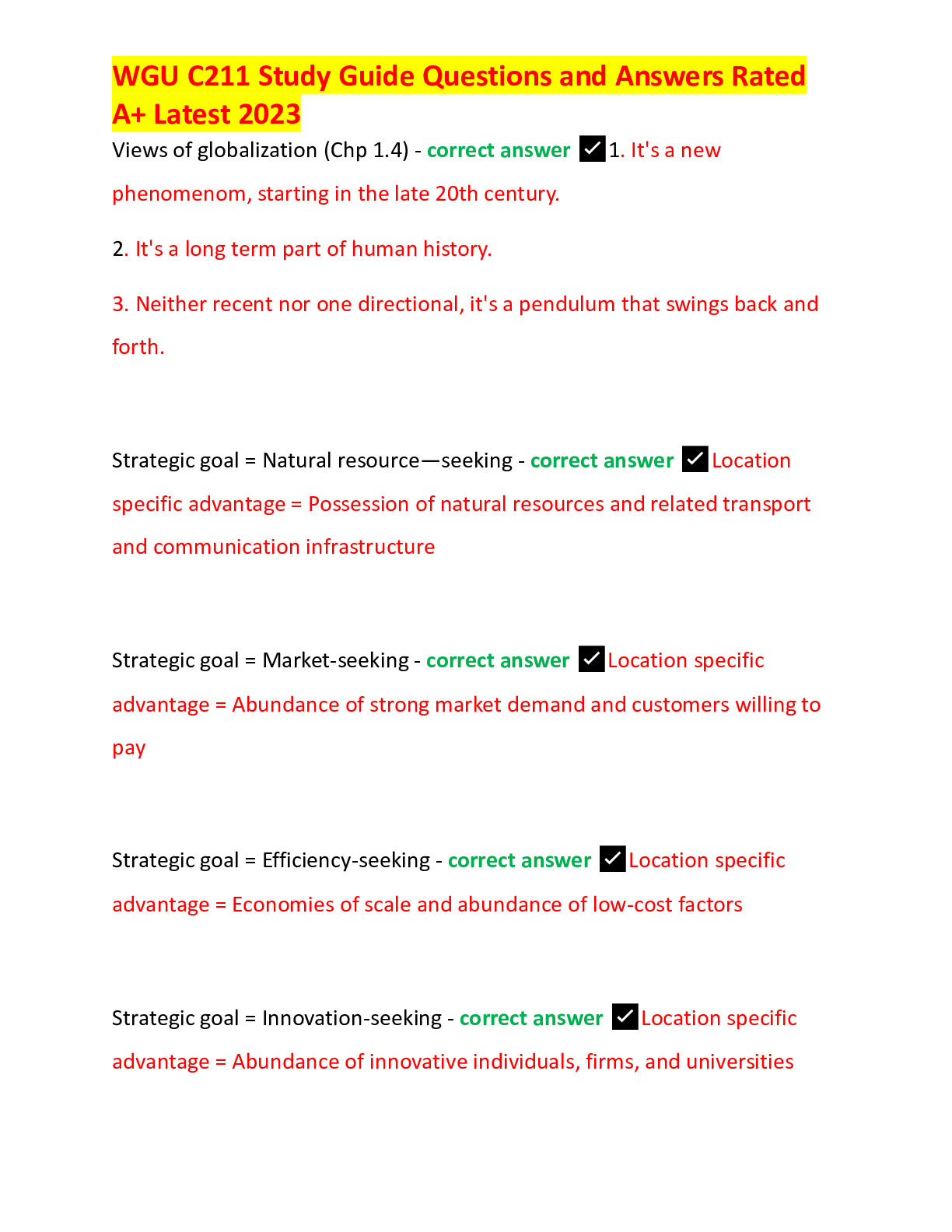
.png)
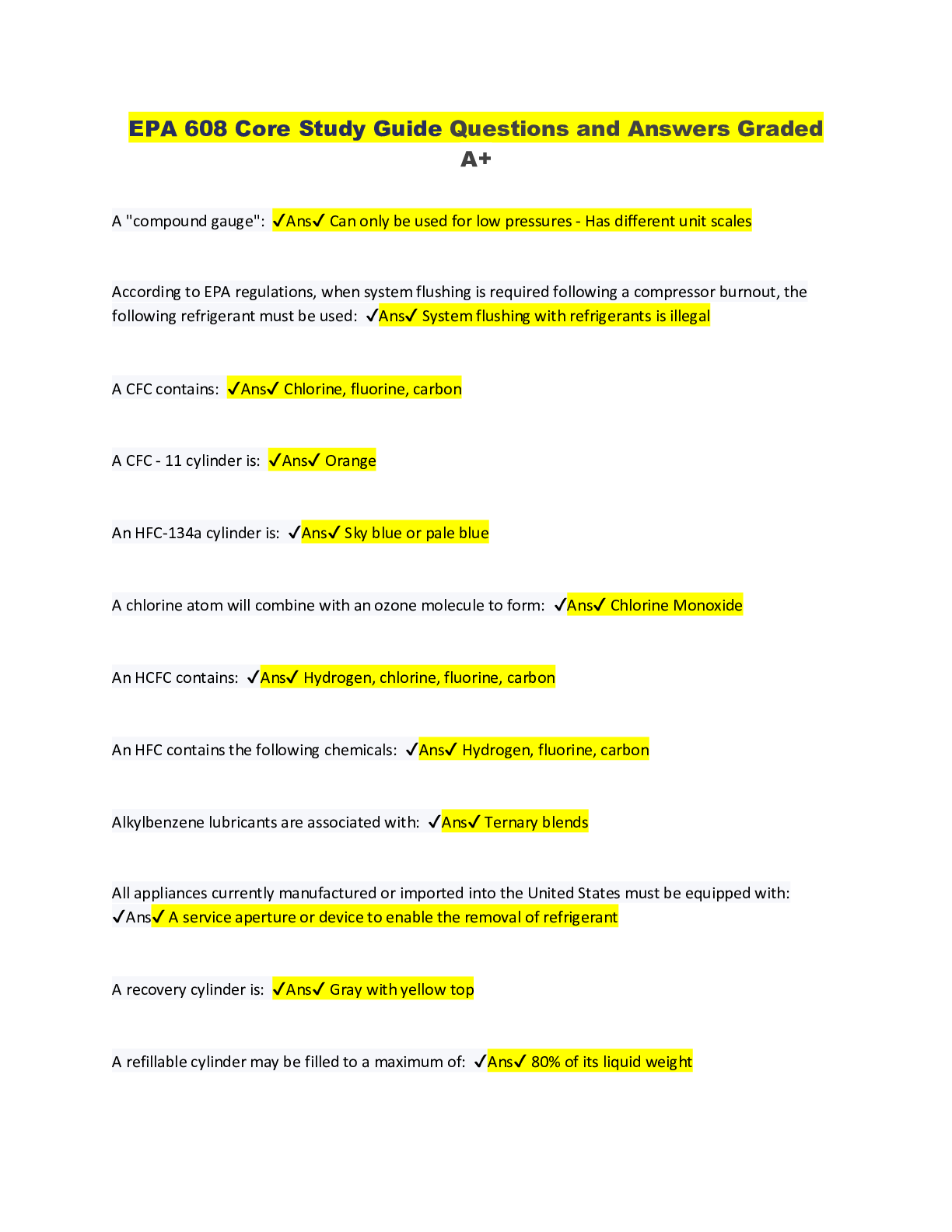
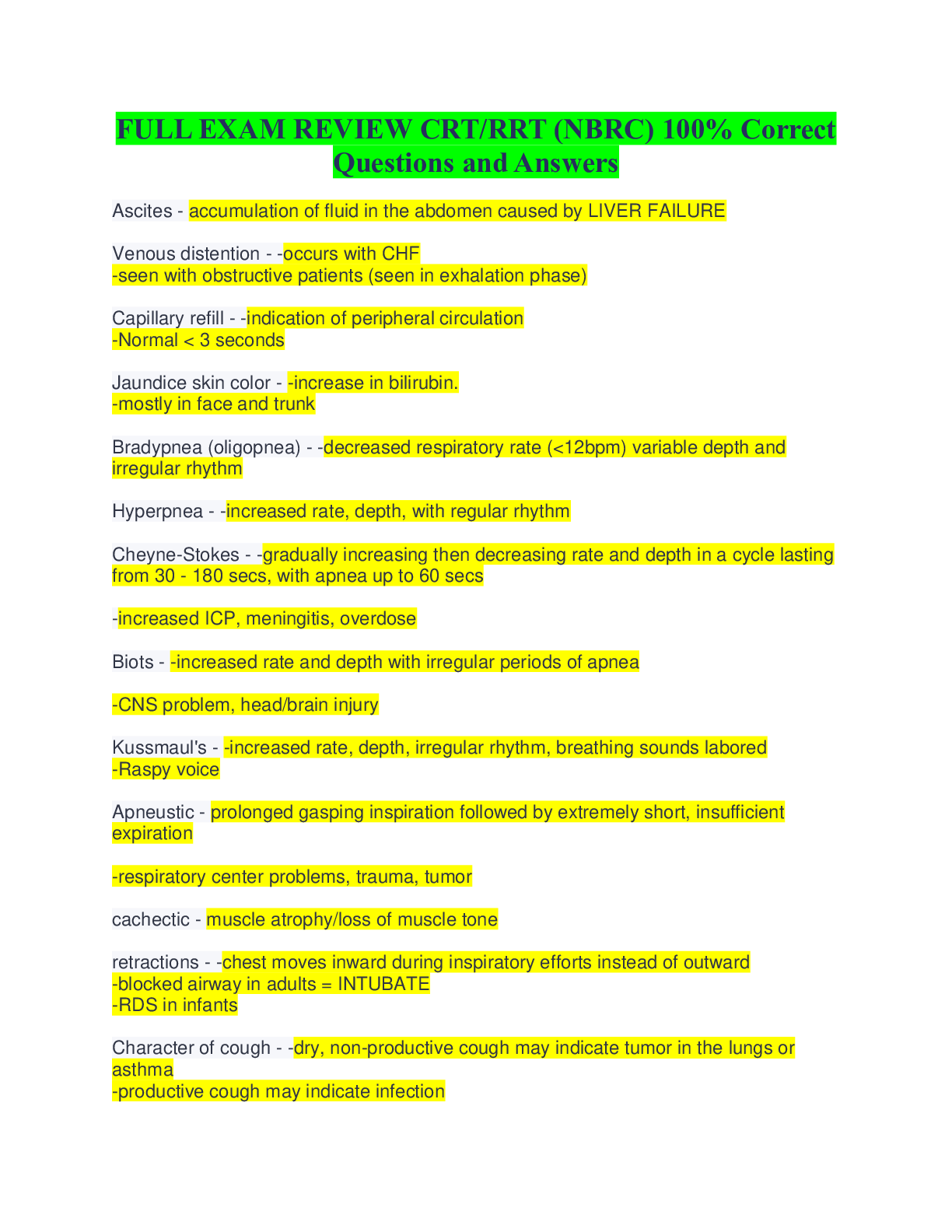


.png)
.png)
.png)
.png)
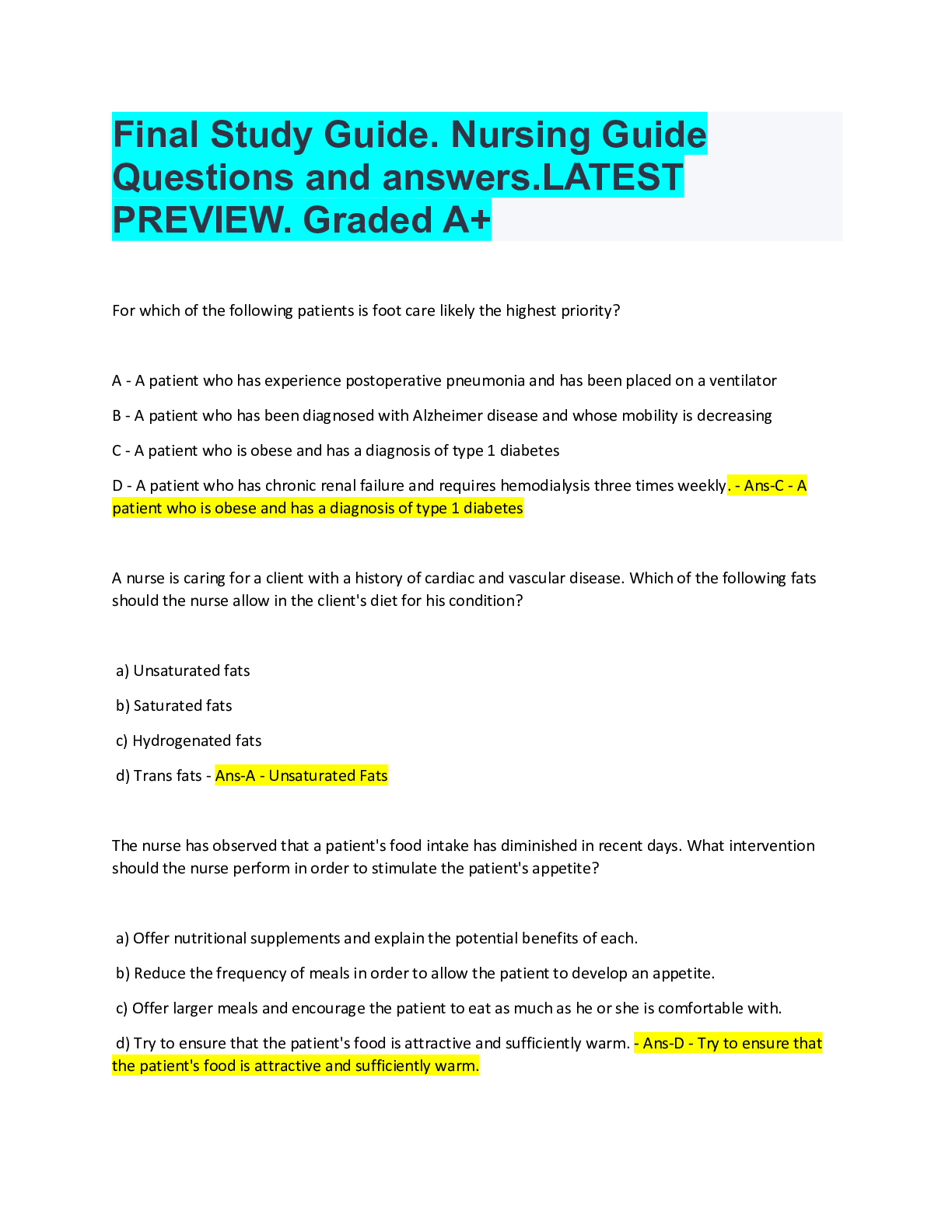
.png)
.png)
